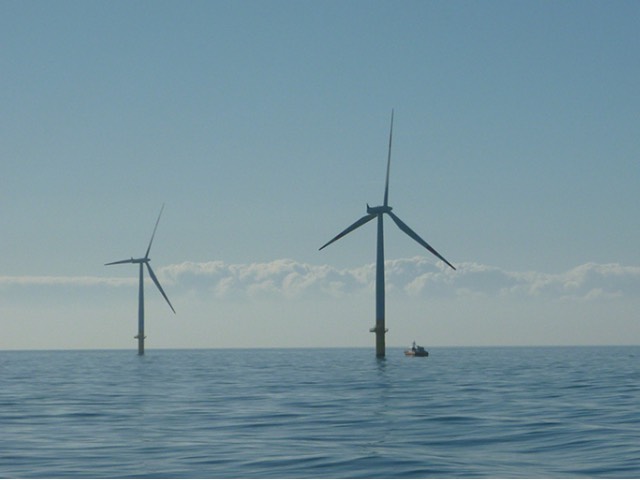DNV has launched a new collaborative research project to develop an automated data processing procedure for verification of detected wind turbine blade defects, with the aim of building trust and generating broader acceptance of automated data processing techniques across the industry and to inform future regulation.
The research project, which is being conducted in partnership with the University of Bristol and Percepetual Robotics, will investigate the automated verification, validation and processing of inspection data, collected by autonomous drones, to improve inspection quality and performance. The project aims to contribute to the development of the UK automated inspection industry.
Unmanned autonomous and remote-controlled vehicles and drones are routinely used to conduct asset inspections in the hard to reach, extreme environments of offshore wind farms. These vehicles can collect rich and extensive data sets including high-definition video, images, geo-positioning and sensor data, to provide integrity information about the installed structures without personnel having to access these dangerous locations.
The research project, which will run for 12 months from April 2021, will address the need for fully automated processing of the data collected, where currently this remains a semi-automated process with reliance on visual inspections of image data by trained experts.


Dr. Elizabeth Traiger, a DNV Senior Researcher in digital assurance said: “With many inspections still being carried out manually, visual inspection of offshore wind turbines, is expensive, labour intensive, and hazardous. Automatic visual inspections can address these issues.
“This collaboration will develop and demonstrate an automated processing pipeline alongside a general framework with the aim of generating broader acceptance across the industry and informing future regulation. This project should provide a stepping-stone to the growth of the automated inspection industry.”
“With the number of installed wind turbines worldwide increasing, including those in remote and harsh environments, the volume of inspection data collected is quickly outpacing the capacity of skilled inspectors who can competently review it. This research project will develop means to tackle this challenge through machine learning algorithms and process automation,“ added Pierre C. Sames, Group Research and Development Director at DNV.
As part of the project, the Visual Information Lab at the University of Bristol, experts in 3D computer vision and image processing, will create algorithms for automated localisation of inspection images and defects using SLAM and 3-D tracking technology.
Perceptual Robotics, an SME specializing in visual inspection of wind turbines using drones, will perform drone inspections and create AI based models for defect detection to trial automation of process in a commercial production environment.
DNV will provide inspection expertise, verify data collected, validate the methodology and performance of the AI algorithms and provide guidance as to existing DNV and IEC recommend practices, regulations and industry networks.
The research is supported by an Innovate UK grant gained as a result of winning the Robotics for a safer world: extension competition.









































